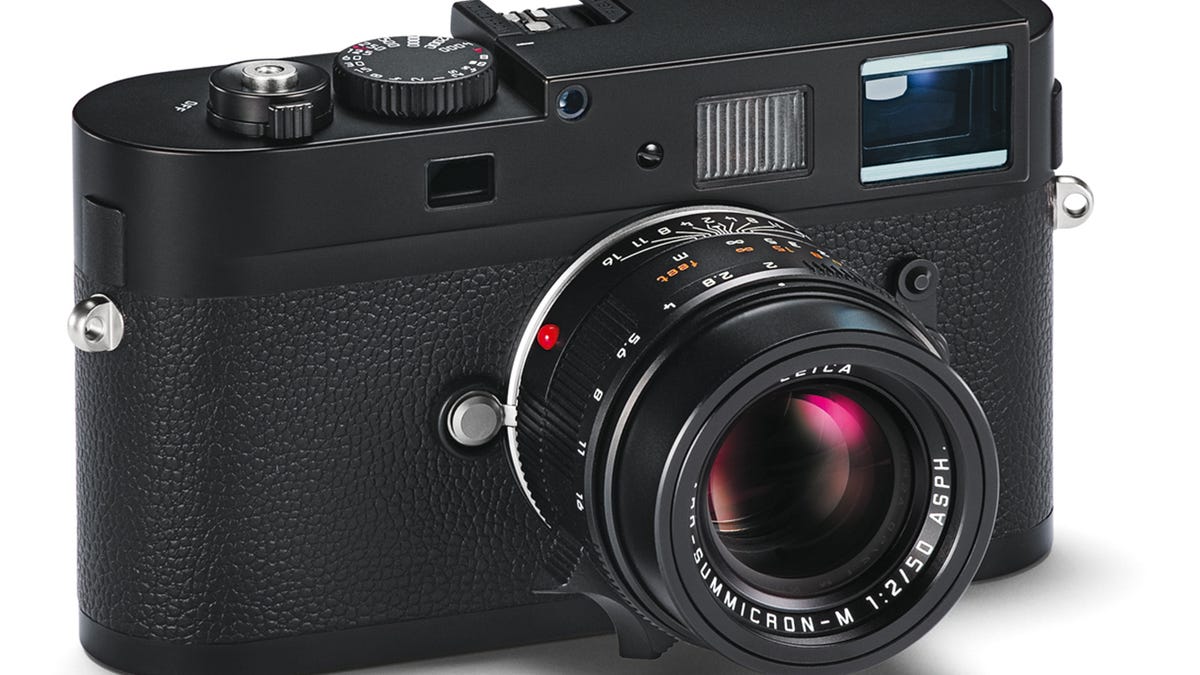New Leica shoots the world in black and white
Among a host of pricey new products announced today, Leica introduced a monochrome-only version of its M-series rangefinder body.

It's an interesting idea that only Leica could get away with: a $7,950 monochrome digital camera, the newest member of Leica's M series of interchangeable-lens rangefinders. While some might spit-take at the idea behind the Leica M Monochrom, it's not as silly as it sounds. For the small set of photographers who shoot exclusively in black and white -- or have the extra bucks for a spare black-and-white-only body -- a sensor with no color filter array (CFA) can definitely produce better monochrome results than one with a CFA.
CFAs not only reduce the effective resolution of a sensor by devoting pixels exclusively to red, green, or blue values, but the process of demosaicking (reconstructing the full-color image from the jumble of discontiguous primary values) introduces artifacts. And while a sensor like the Foveon doesn't use a patterned CFA, instead stacking the filters so that each photosite gets all three primary values, any color filter system will reduce the amount of light that eventually reaches the photosites and reduce the sensor's spectral sensitivity.
However, as Digital Photography Review points out, a lot of the ability to recover blown-out highlights in raw files comes from the channels of data that haven't been completely overexposed -- which you lose with the monochrome sensor.
The M Monochrom uses an 18-megapixel full-frame CCD without a low-pass filter (for sharper resolving) and which the company claims produces extremely fine-grained noise up through ISO 10,000. It's slated to ship in July.
And in case you're wondering what kind of lens you put on a camera like this, Leica also introduced a Summicron 50mm f2.0 M-mount lens that will set you back $7,195. It's got eight elements in five groups and an 11-bladed iris, it focuses as close as 0.3 inch, and it's hand-assembled.
The newest addition to the APS-C X series, which includes the Leica X1, the $1,995 X2 incorporates a new 16.1-megapixel CMOS sensor but keeps the same fixed 24mm (equivalent to 36mm) lens. According to Leica, it's got an improved autofocus system and will now support accessories like a 1.4-megapixel articulated EVF and accessory grip. However, for $2,000 I'd expect better than a 2.7-inch, 230,000-pixel LCD, especially since it has no viewfinder. It's available now.
As many of you know, Leica and Panasonic have some joint ventures for the point-and-shoots, which allows you to pay a lot more for slightly sleeker versions of Panasonic cameras with a Leica logo on them. Today we get the V-Lux 40, a $699 version of the Panasonic Lumix DMC-ZS20, which is widely available for less than $300. And you don't have to wait; it's shipping now.
Of course, if you're just into conspicuous consumption, you don't need to get new technology to spend a lot of money. Leica also announced two designer editions of its existing M9-P, an Edition Hermès for $25,000 and an Edition Hermès Série Limiteé Jean-Louis Dumas for $50,000. Both will be available with various lenses and custom cases. For reference, the normal M9-P costs about $8,000. Set your alerts now; it'll be available in June but there will only be 300 of the Limited Edition and you don't want to miss your opportunity.
Finally, the company announced a $1,950 adapter for using Hasselblad H-mount lenses on its S2 body; it retains all the lens functions including autofocus and central shutter operation.

